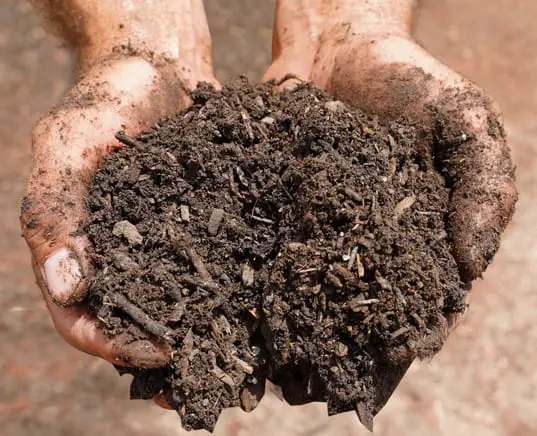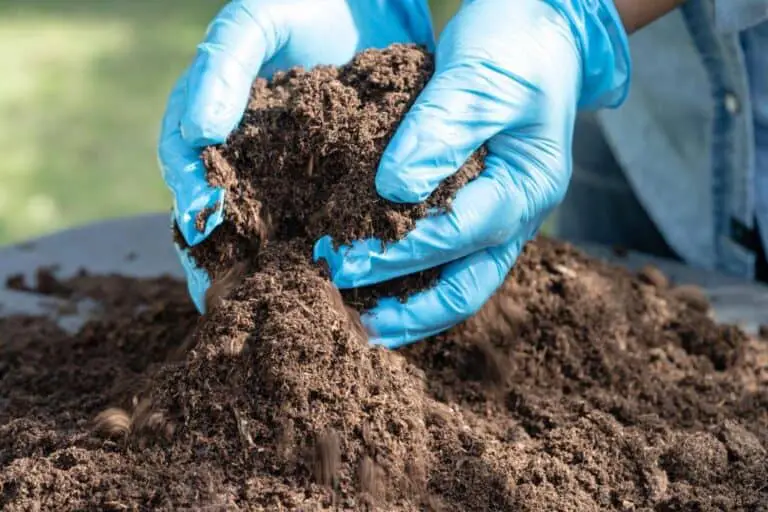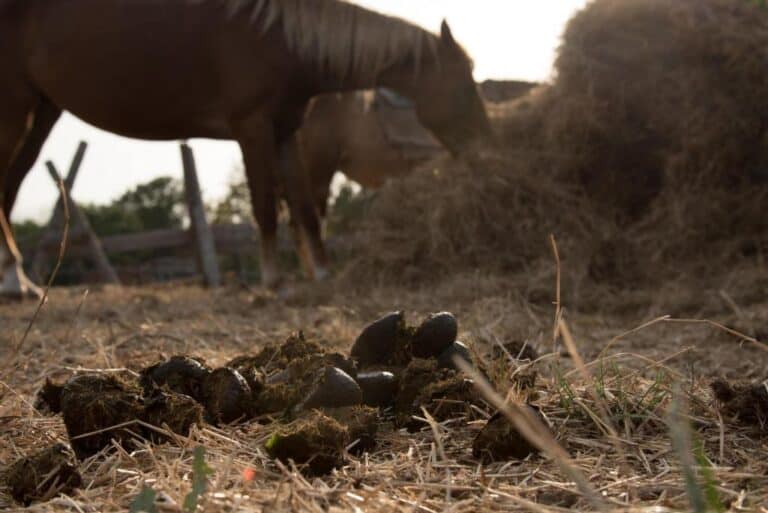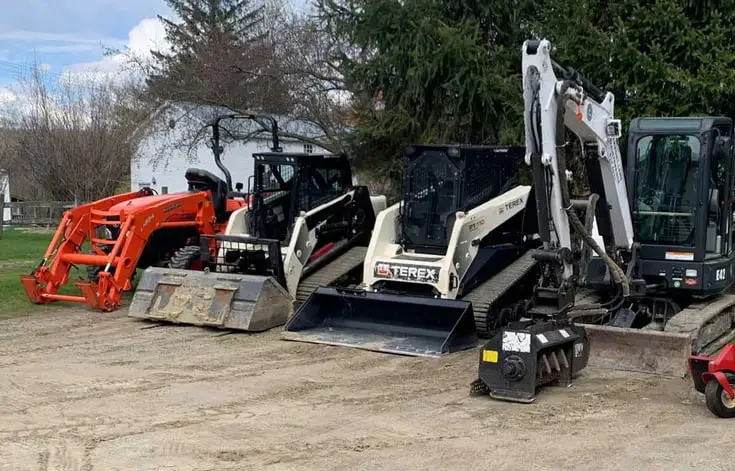What Is the Fastest Way to Compost Chicken Manure? Easy and Efficient Process
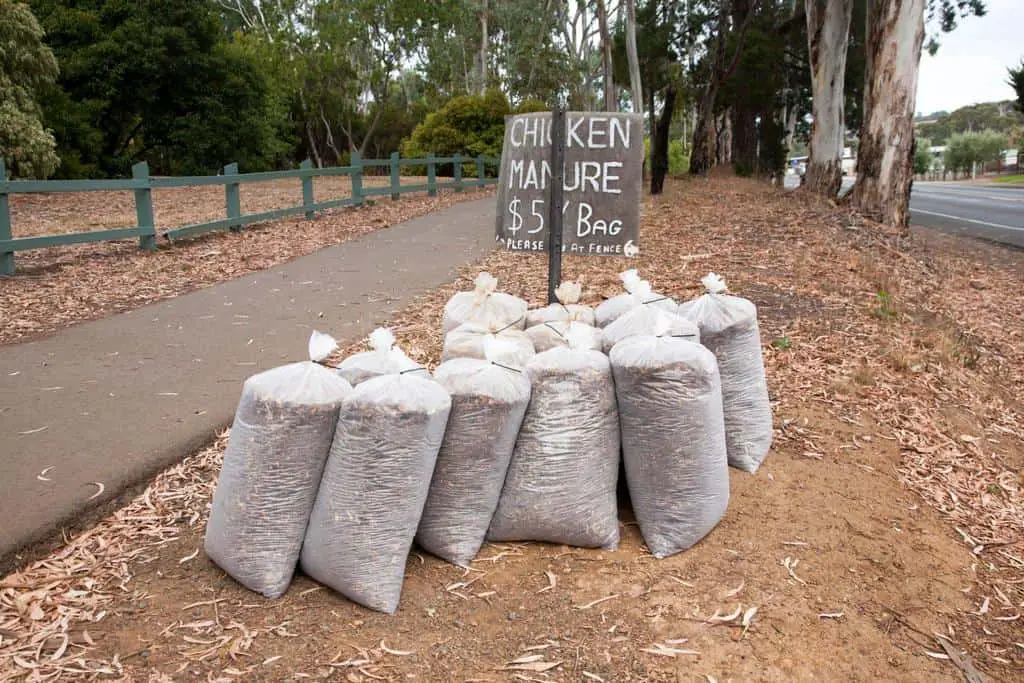
In the ever-evolving world of gardening and sustainable living, time is often of the essence. We dream of lush gardens and thriving plants, but who wants to wait ages for compost to transform chicken manure into a green elixir for their crops? This is where the age-old question arises: What is the fastest way to compost chicken manure?
Imagine harnessing the potential of those poultry droppings in a quick, efficient, and hassle-free manner, all while nurturing your garden’s growth. Picture turning that chicken manure into a powerhouse of nutrients, ready to supercharge your plants at a moment’s notice.
If you’re a gardener with a craving for results and if you want to make the most of your chicken manure without the long waiting game, then fasten your seatbelts, because we’re about to explore the swiftest path to composting chicken manure without compromising on efficiency. Welcome to the world of rapid composting, where green thumbs and busy schedules unite to create garden magic.
Why Compost Chicken Manure?
Before we dive into the process, let’s quickly discuss why composting chicken manure is essential. Raw chicken manure is too potent and can harm your plants if applied directly.
Composting transforms it into a nutrient-rich, balanced fertilizer that’s safe to use in your garden. Here are some benefits of composting chicken manure:
- Reduced Odor: Composting helps eliminate the strong, unpleasant smell associated with fresh chicken manure.
- Pathogen Reduction: The composting process kills harmful pathogens, making the manure safe for your garden.
- Nutrient Enrichment: Composted chicken manure is rich in essential nutrients like nitrogen, phosphorus, and potassium, which are vital for plant growth.
- Improved Soil Structure: It enhances soil structure, making it better at retaining moisture and nutrients.
Now that we understand the importance of composting chicken manure, let’s delve into how to compost chicken manure and the fastest and most efficient way to do it.
The Fastest Way to Compost Chicken Manure
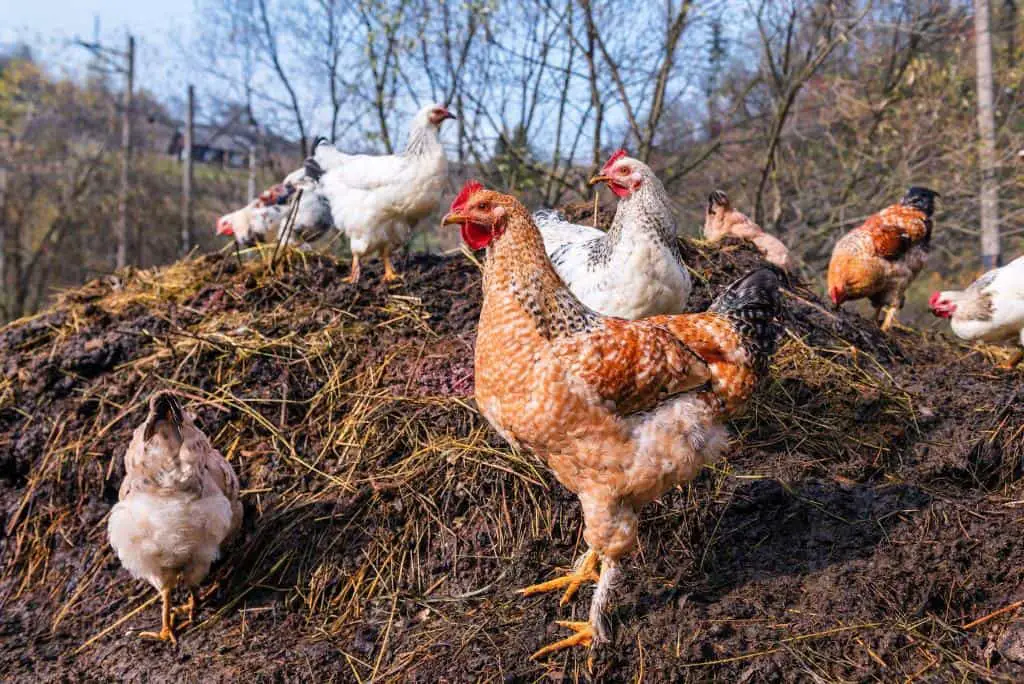
Composting chicken manure efficiently requires the right balance of ingredients, moisture, and aeration. Follow these steps to achieve the fastest results:
Step 1: Gather Your Materials
Here’s what you’ll need:
| Materials | Purpose |
| Chicken Manure | Your valuable nitrogen source |
| Carbon-rich Materials | Such as straw, leaves, or sawdust. |
| Compost Bin or Pile | A designated space for composting. |
| Water | To maintain moisture levels. |
| Shovel or Pitchfork | For turning the compost pile. |
Step 2: Layering
To start composting, layer your materials in the compost bin or pile. Aim for a carbon-to-nitrogen ratio of approximately 25–30:1. This means you should use about 25–30 parts carbon-rich materials for every part of chicken manure. Here’s a basic layering sequence:
- Begin with a layer of carbon-rich materials, around 6-8 inches thick.
- Add a layer of chicken manure, aiming for about 2-4 inches.
- Repeat the layering, making sure to maintain the carbon-to-nitrogen ratio.
Step 3: Maintain Moisture and Aeration
Proper moisture and aeration are crucial for composting success. Your compost pile should resemble a damp sponge—not too wet, not too dry. To achieve this:
- Water the pile as needed to maintain moisture levels. It should be moist but not soggy.
- Turn the compost pile regularly (every 2-4 weeks) using a shovel or pitchfork. Turning aerates the pile, speeding up decomposition.
Step 4: Monitor Temperature
As the composting process kicks in, your pile will heat up. This is a good sign, as it indicates that the microorganisms are actively breaking down the materials. The ideal temperature range is between 130°F and 160°F (54°C and 71°C).
Step 5: Wait for Maturation
Composting chicken manure can take anywhere from a few months to a year, depending on various factors like temperature, aeration, and initial ratios. You’ll know it’s ready when the compost becomes dark, crumbly, and earthy-smelling.
Step 6: Use Your Compost
Once your chicken manure compost is ready, it’s time to reap the rewards. Spread and apply compost in your garden beds, around your plants, or mix it with potting soil for container gardening. Your plants will thank you for the nutrient-rich boost!
Read: How to Make Liquid Fertilizer From Chicken Manure at Home
Achieving the Right Carbon-Nitrogen Ratio
In the realm of composting, achieving the right Carbon-Nitrogen (C:N) ratio is akin to finding the perfect recipe for a better compost. It’s a fundamental aspect that can make or break the composting process. Let’s delve deeper into why this ratio matters, how to balance chicken manure with carbon-rich materials, and the types of carbon-rich materials suitable for composting.
Understanding the Importance of C:N Ratio in Composting
The C:N ratio is the key to unlocking the magic of composting. It’s a measure of the balance between carbon-rich and nitrogen-rich materials in your compost pile. Achieving the ideal C:N ratio of approximately 25-30:1 sets the stage for efficient decomposition.
Why is this ratio so critical? Think of carbon as the structural backbone of your compost, providing stability and aeration. Nitrogen, on the other hand, serves as the energy source for the microorganisms that break down the materials.
In simple terms, carbon creates the house, while nitrogen fuels the inhabitants. Striking the right balance ensures that the microorganisms thrive and work harmoniously to transform your chicken manure and other organic matter into rich, crumbly compost.
Balancing Chicken Manure with Carbon-Rich Materials
Now, let’s get practical. Chicken manure is nitrogen-rich, which means it tilts the C:N ratio towards the nitrogen end. While nitrogen is essential for decomposition, too much of it can create an imbalance, leading to a smelly, sludgy mess rather than compost. To counter this, you need to introduce carbon-rich materials.
Imagine chicken manure as the accelerator pedal of a car. It’s eager to speed up the composting process, but you need to provide the brakes (carbon) to ensure a smooth and controlled journey.
How do you do this? When layering your compost pile, alternate between chicken manure and carbon-rich materials. Begin with a layer of straw, leaves, or sawdust, which are excellent sources of carbon. Then, add a layer of chicken manure. Repeat this process, ensuring that carbon materials dominate the mix. This layering technique maintains the desired C:N ratio and facilitates efficient decomposition.
Types of Carbon-Rich Materials Suitable for Composting
Nature offers a smorgasbord of carbon-rich materials to choose from. Here are some of the most common and effective options for your composting endeavor:
- Straw: Straw is a popular choice due to its high carbon content and ready availability. It also adds a light, airy texture to your compost.
- Fallen Leaves: Gather fallen leaves in the autumn, and you’ll have an abundant source of carbon for your compost pile. Shred them for quicker decomposition.
- Sawdust: If you’re a DIY enthusiast with access to a saw, sawdust from untreated wood is a fantastic carbon source. Just ensure it’s not from pressure-treated wood, which may contain harmful chemicals.
- Shredded Cardboard: Don’t throw away those cardboard boxes; shred them and add them to your compost. Cardboard provides both carbon and structure.
- Newspaper: Shred newspaper (black-and-white pages, avoiding glossy or colored sections) and mix it with other materials to balance the C:N ratio.
- Corn Stalks: If you have a surplus of corn stalks after harvest, chop them up and add them to your compost. They contribute carbon and add texture.
- Straw or Hay: These agricultural byproducts are rich in carbon and are readily available in many regions.
- Coffee Grounds: Coffee grounds are a surprising addition to the carbon-rich list. Although they’re a nitrogen source when fresh, they become carbon-rich as they age, making them excellent for maintaining the C:N balance.
Remember, the key to successful composting is variation. Combining multiple types of carbon-rich materials in your compost pile not only ensures the right C:N ratio but also enriches your compost with diverse nutrients.
Tips for Success
To ensure your chicken manure composting process is as fast and efficient as possible, consider these additional tips:
- Use Proper PPE: When handling chicken manure, wear gloves and a mask to protect yourself from potential pathogens.
- Avoid Overloading: Don’t add excessive amounts of chicken manure to your compost pile at once. Overloading can slow down the decomposition process.
- Keep Records: Maintain a composting journal to track the materials you add, dates of turning, and any observations. This will help you refine your process over time.
- Combine with Other Materials: For an even more balanced compost, combine chicken manure with other kitchen scraps and yard waste.
- Consider Compost Activators: If your compost pile seems slow to decompose, consider using a commercial compost activator to speed up the process.
Conclusion
Composting chicken manure is not only a responsible way to manage waste from your backyard flock but also a fantastic way to improve your garden’s health and productivity.
By following the steps outlined in this article and implementing the tips for success, you can efficiently turn chicken manure into a valuable resource for your plants. So, get composting and watch your garden flourish like never before!
FAQs on Speed up Chicken Manure Decomposition
How long does it take to compost chicken manure?
Composting chicken manure typically takes around 6 to 12 months, depending on various factors like composting method, temperature, moisture, and proper aeration.
Can you compost chicken manure with other materials?
Yes, you can compost chicken manure with materials like straw, sawdust, or leaves. This mix helps create a balanced compost pile, promoting proper decomposition and nutrient retention.
What are the best composting methods for small-scale chicken farms?
Small-scale chicken farms can opt for techniques like aerobic composting or vermicomposting. These methods effectively manage chicken manure while ensuring optimal nutrient retention and minimal odor.
How do you prevent chicken manure compost from smelling bad?
To prevent unpleasant odors, ensure proper aeration, maintain the right moisture levels, and regularly turn the compost pile. Adding carbon-rich materials like straw or leaves can also help neutralize odors.
Is composted chicken manure safe for use in vegetable gardens?
Yes, composted chicken manure is safe for vegetable gardens when properly composted. Ensure that the compost reaches adequate temperatures to kill pathogens, and let it mature before use to avoid any potential risks.
Can you compost chicken manure without any additional materials?
While it’s possible to compost chicken manure alone, adding additional materials like straw or leaves is recommended to create a balanced compost mix, improve aeration, and prevent the compost from becoming too dense.
Are there any risks associated with using composted chicken manure in farming?
Risks can arise if composting processes are not adequately managed, leading to the presence of pathogens or high levels of ammonia. Ensuring proper composting temperatures and maturation can mitigate these risks.
How can chicken manure composting contribute to sustainable agriculture practices?
Chicken manure composting reduces waste, improves soil quality, and minimizes the need for synthetic fertilizers, thus promoting sustainable agriculture. Composting also helps sequester carbon in the soil and reduce greenhouse gas emissions, contributing to environmental sustainability.

